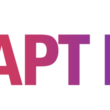The Treasury Department recently released an estimate of $1 trillion for the third quarter borrowing, which has raised questions about the sustainability of foreign and domestic buyers’ demand for U.S. government debt. Analysts are now observing the deteriorating fiscal deficit outlook and the pressing need for continuous borrowing.
The details regarding Treasury’s financing requirements will be released at 8:30 a.m. on Wednesday. However, the current estimate of $1 trillion for the July-September period is already the highest ever recorded. This has led analysts to ponder whether the fixed-income market will face a prolonged period of diminishing demand from potential buyers, resulting in higher Treasury yields and a return to market illiquidity.
Thomas Simons, an economist at Jefferies, recognizes that Treasury issuances have been well received since the onset of the Covid-19 pandemic in 2020. However, as time progresses, it becomes increasingly difficult to identify the source of the same level of demand. Simons suggests that relying too heavily on recent history may lead to erroneous conclusions about meeting the borrowing needs.
Simons emphasizes the risk of a potential lack of demand from both foreign and domestic fixed-income buyers during this period. This scenario may result in a fatigue within the market due to larger auction sizes, making Treasury bonds more challenging to trade. As a consequence, yields may rise, and liquidity issues may arise, causing the market to become less deep.
Despite these concerns, Simons believes that any potential period of illiquidity would be less severe than what was witnessed during the 2013 taper tantrum or last year’s volatility in the U.K. bond market.
Conclusion
As the Treasury Department prepares to release further details about its financing needs, analysts are increasingly concerned about the capacity of foreign and domestic buyers to sustain their demand for U.S. government debt. The possibility of a prolonged period of diminishing demand, higher Treasury yields, and decreased market liquidity raises uncertainties for the broader fixed-income market. However, experts believe that any potential illiquidity will be less severe compared to previous market episodes.
Treasury Plans to Borrow $1.007 Trillion in Third Quarter
The U.S. Treasury has announced that it expects to borrow $1.007 trillion in the third quarter of this year, which is $274 billion more than initially projected in May. This significant increase in borrowing estimates is primarily due to expectations of lower receipts and higher outlays, according to Treasury officials.
While this is the largest estimate ever for the third quarter, it is important to note that it is not unprecedented in relation to borrowing estimates for other parts of the year. In fact, in May 2020, during the height of the COVID-19 pandemic, the Treasury estimated a borrowing need of almost $3 trillion for the April-June quarter.
Looking ahead to the fourth quarter, the Treasury predicts a borrowing need of $852 billion in privately-held net marketable debt. This estimate assumes an end-of-December cash balance of $750 billion. Strategists at JPMorgan Chase & Co. suggest that these third and fourth-quarter estimates indicate a wider budget deficit expectation for the 2023 fiscal year.
Despite the substantial borrowing needs, investors have shifted their attention towards the strength of the U.S. labor market and the potential for higher interest rates. Positive labor market data has led to increased yields across different Treasury bonds. However, this has not had a positive impact on the stock market, as all three major U.S. stock indexes experienced a decline in morning trading.
Regarding the upcoming auction, the type of buyers attracted will largely depend on the Treasury’s issuance focus. If the focus is on bills, money-market mutual funds may allocate more cash to Treasury bonds. On the other hand, if the focus is on long-duration coupons, players such as insurers, pension funds, hedge funds, and bond funds are expected to be the primary buyers. Ultimately, demand will rely on inflows from clients before seeing an increase.
In summary, the Treasury’s borrowing needs for the third quarter have surpassed initial projections, highlighting the ongoing economic challenges faced by the U.S. However, market focus has shifted to other factors such as the U.S. labor market’s strength and its impact on interest rates. The upcoming auction will likely attract different buyers depending on the Treasury’s issuance focus.




